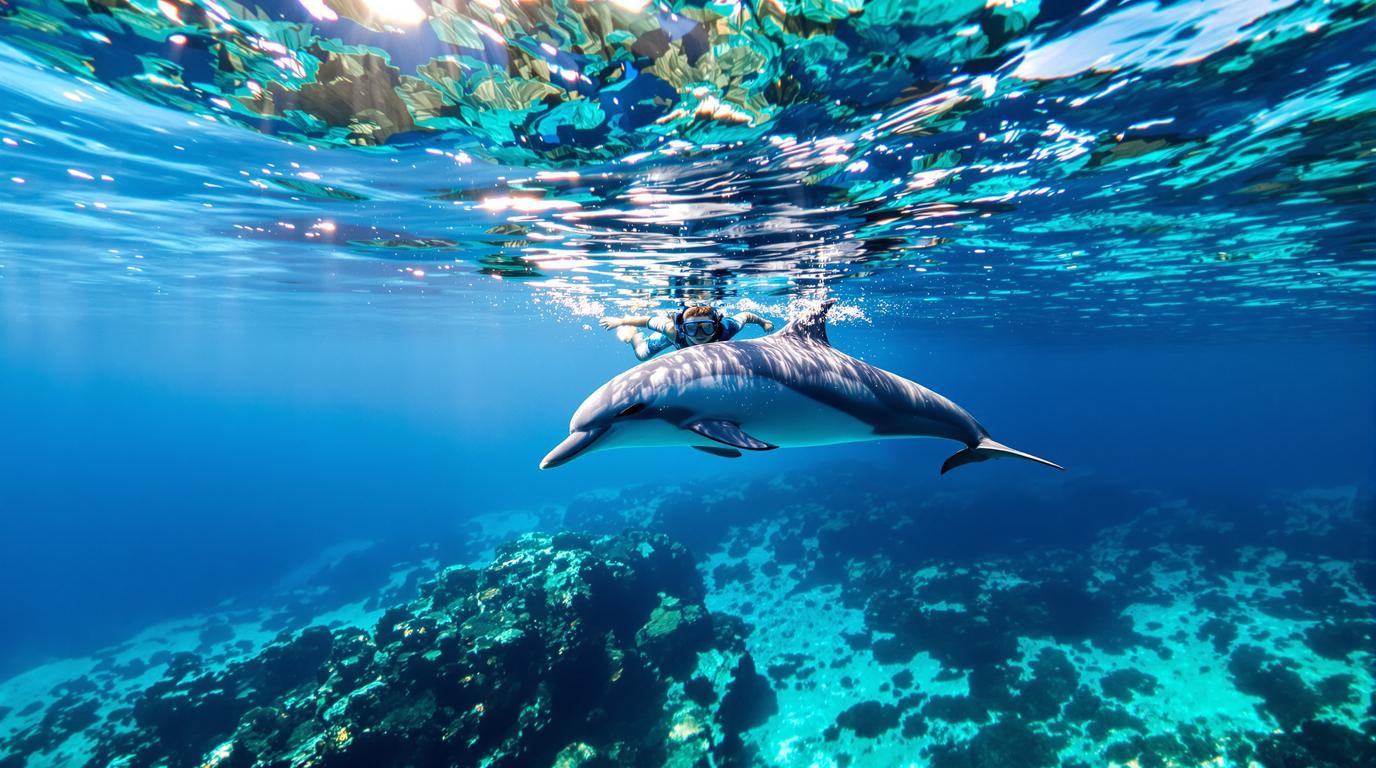Dolphins leap through crystal waters as the sun rises over a pristine shoreline that few travelers have witnessed. Off Tanzania’s coast lies Pemba Island—a secluded paradise where marine life thrives and authentic cultural experiences await the intrepid explorer. While it doesn’t actually have pink sands (contrary to some internet rumors), this emerald isle offers something far more valuable: a genuine escape from the tourist crowds that swarm its famous neighbor, Zanzibar.
The forgotten jewel of the Zanzibar Archipelago
Nicknamed “The Green Island” for its lush clove plantations and verdant hills, Pemba remains remarkably untouched by tourism. While over 500,000 visitors flock to Zanzibar annually, Pemba sees barely 5% of that number. This isolation has preserved both its natural environments and traditional Swahili way of life, offering travelers a rare glimpse into authentic coastal Tanzanian culture.
Marine wonderland where dolphins play freely
The Pemba Channel’s deep, nutrient-rich waters create a marine sanctuary unlike anywhere else in East Africa. Here, dolphins don’t perform for tourist boats—they live naturally in family pods, often approaching curious snorkelers with genuine curiosity. The waters surrounding Misali Island, a protected conservation area west of Pemba, host some of Tanzania’s most pristine coral gardens.
“The dolphins around Pemba aren’t accustomed to tourist boats chasing them all day,” explains Ibrahim, a local marine guide. “When they approach you here, it’s because they’re genuinely curious—it’s a mutual exchange of wonder.”
Beaches so pristine you’ll wonder if you’re the first visitor
While not pink as sometimes mistakenly reported, Pemba’s beaches might be even more spectacular with their powder-white sands set against dense mangrove forests. Vumawimbi Beach stretches for nearly a mile along the northwestern coast, yet rarely hosts more than a handful of visitors. The absence of beach vendors, clubs, and resorts creates a sensation of discovering an untouched paradise—something increasingly rare in our hyperconnected world.
Journey to the island that time forgot
The relative difficulty of reaching Pemba has been its salvation from mass tourism. Most travelers arrive via a three-hour ferry from Stone Town or a short flight from Zanzibar. This extra effort filters out casual tourists, rewarding those who make the journey with an island that feels genuinely discovered rather than developed. The accommodations—mostly small eco-lodges and family-run guesthouses—reinforce this authentic experience.
A spice island where traditions endure
Pemba produces 70% of Tanzania’s cloves, earning it the nickname “Spice Island” long before tourism arrived. Visitors can explore working spice farms, where generations of families have harvested aromatic treasures using traditional methods. Unlike the more commercialized spice tours elsewhere in Tanzania, these experiences offer genuine cultural exchanges with farming families.
This cultural authenticity mirrors what visitors experience at ancient Kyoto, where centuries of traditions remain visible in daily life—though Pemba’s traditions remain far less discovered.
The mysterious Ngezi Forest
The island’s northern reaches hide the Ngezi Forest Reserve, home to endemic species like the endangered Pemba Flying Fox—massive fruit bats with wingspans reaching nearly five feet. At dusk, thousands take flight in a spectacle reminiscent of scenes from the mystical floating mountains of Avatar, though entirely natural and unaltered by Hollywood.
“When the flying foxes emerge at sunset, it’s like watching the forest breathe,” says Fatma, a local conservation guide. “Many visitors tell me they’ve never felt so connected to nature’s rhythms.”
Ancient ruins tell forgotten stories
The crumbling ruins at Ras Mkumbuu and Pujini reveal Pemba’s significance in ancient Swahili city-states and Indian Ocean trade networks. Unlike the restored and heavily visited historical sites on Zanzibar, these atmospheric ruins often provide solitary exploration experiences—similar to discovering America’s hidden alien-like landscapes without the crowds.
When paradise calls
The best time to visit is during the dry seasons (June-October or December-March) when roads remain passable and visibility for snorkeling is optimal. Even then, you’ll likely share Pemba’s 380 square miles with fewer than 100 other visitors—a stark contrast to Bora Bora’s untouched twin in the South Pacific, which still sees substantial tourism.
Pemba Island isn’t for everyone—and that’s precisely its magic. Those seeking luxury resorts and nightlife should look elsewhere. But for travelers yearning to experience a place that still feels genuinely discovered rather than developed, Pemba offers what few destinations can in our over-traveled world: the authentic joy of exploration, reminiscent of Barcelona’s hidden architectural fantasy world but in a natural, unspoiled setting.
